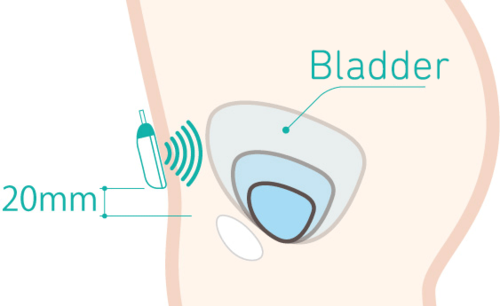Japan is one of the most advanced aging societies in the world. Those over the age of 65 accounted for 27.7 percent of the total population as of 2017 and that number is expected to continue rising. As people grow older, they experience many changes both mentally and physically. One symptom of these changes is bladder control issues, which are often seen in individuals from around age 40 and up. According to a survey conducted in Japan, approximately 80 percent of seniors suffer from some sort of urinary disorder. Especially among those over the age of 80, the percentage of those suffering from urinary disorders is said to rapidly accelerate. Among the various symptoms, incontinence has perhaps the widest-ranging negative impact on the quality of life of an individual, as it may cause the individual to hesitate to go on outings, decrease their willingness to engage with others and with their community, and disrupt their sleep. In addition, the act of urination is something personal, so not being able to control one’s bladder is a sensitive issue that can damage one’s self-esteem.
The most common method used to tackle urinary incontinence is to use adult diapers. Even if a person is leading an independent life, there may be times when they leak urine by accident. The frequency of such occurrences may increase with age. If this happens to someone while they are away from their home, they must change the diaper at the nearest toilet. This inconvenience leads to anxiety during outings. Using diapers is only a supportive measure and does not prevent incontinence. Moreover, it is common for bed-ridden seniors to rely on adult diapers at all times. However, the caregiver does not necessarily know the timing of when the person has urinated. Prolonged exposure to wet diapers can be unsanitary and can increase the risk of urinary tract infections, but constantly checking for incontinence is a tremendous burden on the caregiver.
To address this problem, a company called Triple W Japan K.K. has developed DFree, the first ICT device ever produced that anticipates when the user will need to use the toilet. DFree is a wearable device that detects the expansion of the bladder using ultrasonic waves that are harmless to human beings. By monitoring and visualizing the bladder condition, it is able to signal the timing of urination.
According to Mr. Masanori Kobayashi, general manager of Triple W Japan, “Those who have experienced accidental leaks of urine during an outing tend to become extremely apprehensive and even try to refrain from drinking to lessen the risk of it occurring again. DFree uses a smartphone application to alert the wearer when it is time to go to the toilet. In addition, continuous use of DFree provides a visual record of the individual’s urination pattern, which leads to greater awareness of his or her urination cycle. Many users report that this helps them enjoy outings without worrying about possible incontinence.”
The DFree alert function also helps alleviate the burden on caregivers. In assisting the elderly in their daily lives, the most demanding tasks for caregivers are feeding, bathing, and providing toileting support. Of these three, the timing of excretory functions is beyond the control of the caregiver and the person being looked after. Because DFree alerts the user when it is time to urinate, it allows the senior to be more independent in the act of going to the toilet, helping them maintain self-esteem and improving their quality of life. Particularly for seniors with decreased physical capacity, rushing to the toilet during the night may lead to falls that result in fractured bones, so alerting them in advance lets them get to the bathroom at a safer pace.
DFree also alleviates the burden of accidental leaks and decreases the use of diapers, thereby reducing costs.
By using DFree to determine the appropriate timing for getting a senior to the toilet, it can help prevent accidents, promote bladder control, and lessen the physical stress on the elderly when needing to change diapers. DFree thus offers a huge potential to solve many of the challenges related to aging by helping address the problems associated with incontinence.
Related Resources




